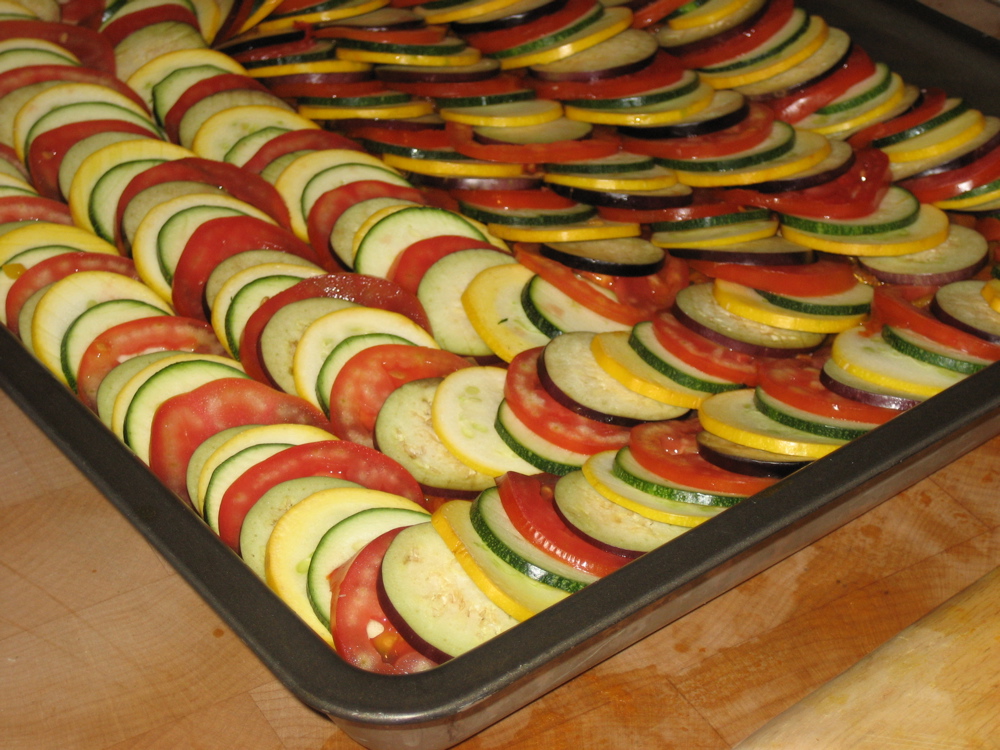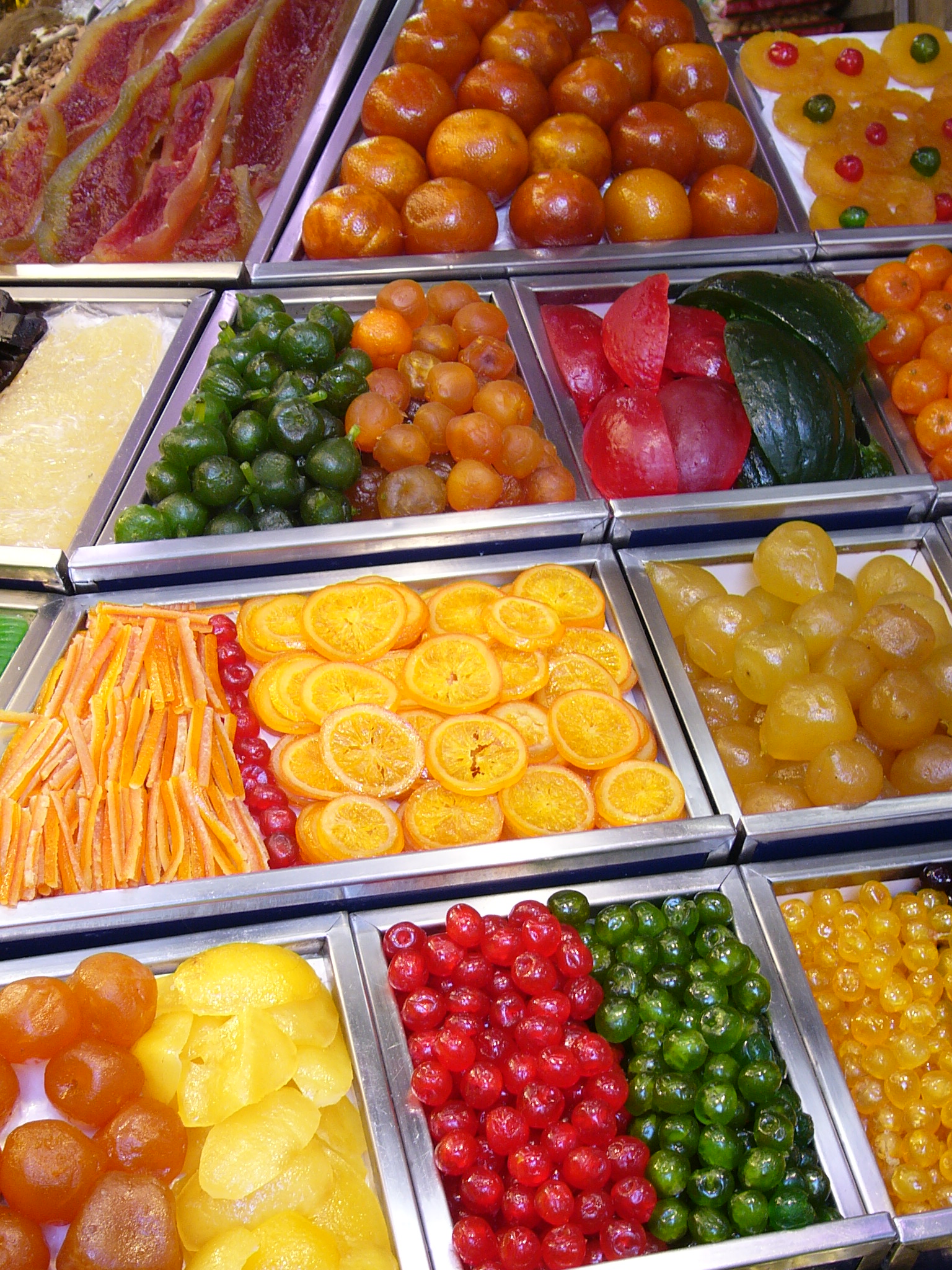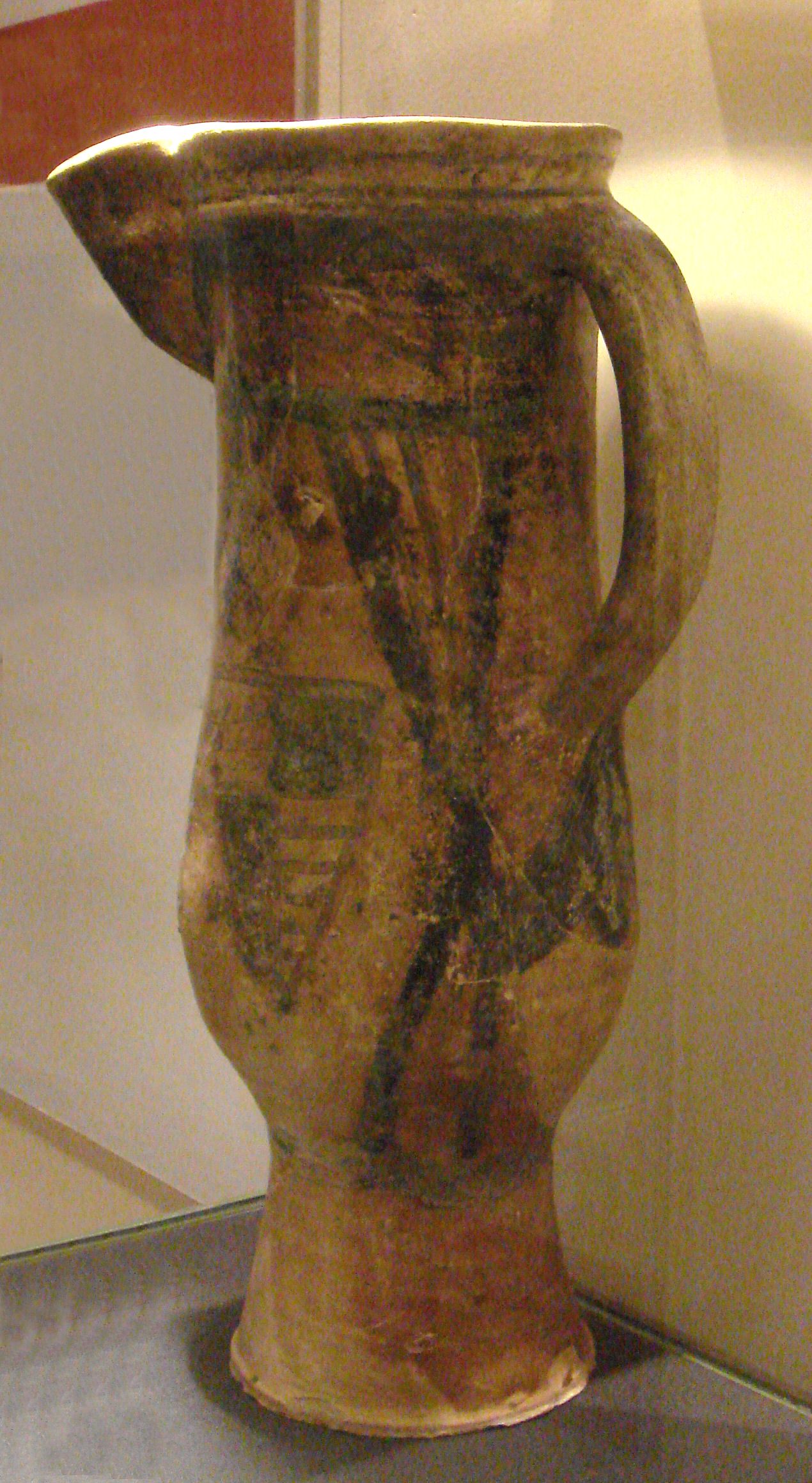|
Confit
Confit (, ) (from the French word '' confire'', literally "to preserve") is any type of food that is cooked slowly over a long period as a method of preservation. Confit, as a cooking term, describes when food is cooked in grease, oil, or sugar water (syrup), at a lower temperature, as opposed to deep frying. While deep frying typically takes place at temperatures of , confit preparations are done at a much lower temperature, such as an oil temperature of around , or sometimes even cooler. The term is usually used in modern cuisine to mean long, slow cooking in oil or fat at low temperatures, many having no element of preservation, such as in dishes like confit potatoes. For meat, this method requires the meat to be salted as part of the preservation process. After salting and cooking in fat, confit can last for several months or years when sealed and stored in a cool, dark place. Confit is a specialty of southwestern France. Etymology The word comes from the French verb ''con ... [...More Info...] [...Related Items...] OR: [Wikipedia] [Google] [Baidu] |
Confit Byaldi
Confit byaldi is a variation on the traditional French dish ratatouille by French chef Michel Guérard. History The name is a play on the Turkish dish "İmam bayıldı", which is a stuffed eggplant. The original ratatouille recipe had the vegetables fried before baking. Since at least 1976, some French chefs have prepared the ratatouille vegetables in thin slices instead of the traditional rough-cut. Michel Guérard, in his book founding ''cuisine minceur'' (1976), recreated lighter versions of the traditional dishes of nouvelle cuisine. His recipe, ''confit bayaldi'', differed from ratatouille by not frying the vegetables, removing peppers and adding mushrooms. American celebrity chef Thomas Keller first wrote about a dish he called "byaldi" in his 1999 cookbook, ''The French Laundry Cookbook''. Keller's variation of Guérard's added two sauces: a tomato and peppers sauce at the bottom ('' pipérade''), and a vinaigrette at the top. He served as food consultant to the P ... [...More Info...] [...Related Items...] OR: [Wikipedia] [Google] [Baidu] |
Fruit Preserves
Fruit preserves are preparations of fruits whose main preserving agent is sugar and sometimes acid, often stored in glass jars and used as a condiment or spread. There are many varieties of fruit preserves globally, distinguished by the method of preparation, type of fruit used, and place in a meal. Sweet fruit preserves such as jams, jellies, and marmalades are often eaten at breakfast with bread or as an ingredient of a pastry or dessert, whereas more savory and acidic preserves made from " vegetable fruits" such as tomato, squash or zucchini, are eaten alongside savory foods such as cheese, cold meats, and curries. Techniques There are several techniques of making jam, with or without added water. One factor depends on the natural pectin content of the ingredients. When making jam with low pectin fruits like strawberries either high pectin fruit like orange can be added, or additional pectin in the form of pectin powder, citric acid or citrus peels. Often the fruit will be ... [...More Info...] [...Related Items...] OR: [Wikipedia] [Google] [Baidu] |
Duck Confit
Duck confit (french: confit de canard ) is a French dish made with whole duck. In Gascony, according to the families perpetuating the tradition of duck confit, all the pieces of duck are used to produce the meal. Each part can have a specific destination in traditional cooking, the neck being used for example in an invigorating soup, the garbure. Duck confit is considered one of the finest French dishes. Traditional preparation While it is made across France, it is seen as a specialty of Gascony. The confit is prepared in a centuries-old process of preservation that consists of salt curing a piece of meat (generally goose, duck, or pork) and then cooking it in its own fat. To prepare a confit, the meat is rubbed with salt, garlic, and sometimes herbs such as thyme, then covered and refrigerated for up to 36 hours. Salt-curing the meat acts as a preservative. Prior to cooking, the spices are rinsed from the meat, which is then patted dry. The meat is placed in a cooking dish ... [...More Info...] [...Related Items...] OR: [Wikipedia] [Google] [Baidu] |
Food Preservation
Food preservation includes processes that make food more resistant to microorganism growth and slow the oxidation of fats. This slows down the decomposition and rancidification process. Food preservation may also include processes that inhibit visual deterioration, such as the enzymatic browning reaction in apples after they are cut during food preparation. By preserving food, food waste can be reduced, which is an important way to decrease production costs and increase the efficiency of food systems, improve food security and nutrition and contribute towards environmental sustainability. For instance, it can reduce the environmental impact of food production. Many processes designed to preserve food involve more than one food preservation method. Preserving fruit by turning it into jam, for example, involves boiling (to reduce the fruit's moisture content and to kill bacteria, etc.), sugaring (to prevent their re-growth) and sealing within an airtight jar (to prevent reconta ... [...More Info...] [...Related Items...] OR: [Wikipedia] [Google] [Baidu] |
Garbure
''Garbure'' is a thick French stew traditionally based on cabbage and confit d'oie,ROBUCHON, J., & MONTAGNÉ, P. (2001). Larousse gastronomique. New York, Clarkson Potter. though the modern version is usually made with ham, cheese and stale bread. The name derives from the use of the term ''garb'' to describe sheaves of grain depicted on a heraldic shield or coat of arms. Thus the name of garbure, which is eaten with a fork, is a reference to the use of pitchforks to pick up sheaves of grain. It originated in Gascony in the historical cultural region of Occitania. It is similar to ''potée''. w:fr:Garbure ''Garbure'' was the daily sustenance of Gascon peasantry. It varied from home to home, resources of the cook, household income, and rhythms of the seasons. The dish is based on lengthy simmering of an assortment of vegetables and meats, generally meats preserved '' en confit''. The essential cabbage may be accompanied by broad beans, fresh or dried, mangetout peas, potatoes, ... [...More Info...] [...Related Items...] OR: [Wikipedia] [Google] [Baidu] |
Candied Fruit
Candied fruit, also known as glacé fruit, is whole fruit, smaller pieces of fruit, or pieces of peel, placed in heated sugar syrup, which absorbs the moisture from within the fruit and eventually preserves it. Depending on the size and type of fruit, this process of preservation can take from several days to several months. This process allows the fruit to retain its quality for up to a year. It has existed since the 14th century. The continual process of drenching the fruit in syrup causes the fruit to become saturated with sugar, preventing the growth of spoilage microorganisms due to the unfavourable osmotic pressure this creates. Fruits that are commonly candied include dates, cherries, pineapple, peaches, as well as ginger root. The principal candied peels are orange and citron; these with candied lemon The lemon (''Citrus limon'') is a species of small evergreen trees in the flowering plant family Rutaceae, native to Asia, primarily Northeast India (Assam), N ... [...More Info...] [...Related Items...] OR: [Wikipedia] [Google] [Baidu] |
Occitania
Occitania ( oc, Occitània , , or ) is the historical region in Western Europe, Western and Southern Europe where the Occitan language, Occitan language was historically spoken and where it is sometimes still used as a second language. This cultural area roughly encompasses the southern third of France (with the exception of the French Basque Country and Northern Catalonia, French Catalonia) as well as part of Spain (Aran Valley), Monaco, and smaller parts of Italy (Occitan Valleys, Guardia Piemontese). Occitania has been recognized as a linguistic and cultural concept since the Middle Ages, but has never been a legal nor a political entity under this name. However, the territory was united in Roman times as the ''Septem Provinciae, Seven Provinces'' ( la, Septem Provinciæ) and in the Early Middle Ages (''Aquitanica'' or the Visigothic Kingdom#Kingdom of Toulouse, Visigothic Kingdom of Toulouse, or the share of Louis the Pious following Thionville ''divisio regnorum'' in 806) ... [...More Info...] [...Related Items...] OR: [Wikipedia] [Google] [Baidu] |
Provence
Provence (, , , , ; oc, Provença or ''Prouvènço'' , ) is a geographical region and historical province of southeastern France, which extends from the left bank of the lower Rhône to the west to the Italian border to the east; it is bordered by the Mediterranean Sea to the south. It largely corresponds with the modern administrative region of Provence-Alpes-Côte d'Azur and includes the departments of Var, Bouches-du-Rhône, Alpes-de-Haute-Provence, as well as parts of Alpes-Maritimes and Vaucluse.''Le Petit Robert, Dictionnaire Universel des Noms Propres'' (1988). The largest city of the region and its modern-day capital is Marseille. The Romans made the region the first Roman province beyond the Alps and called it ''Provincia Romana'', which evolved into the present name. Until 1481 it was ruled by the Counts of Provence from their capital in Aix-en-Provence, then became a province of the Kings of France. While it has been part of France for more than 500 years, it ... [...More Info...] [...Related Items...] OR: [Wikipedia] [Google] [Baidu] |
Béarn
The Béarn (; ; oc, Bearn or ''Biarn''; eu, Bearno or ''Biarno''; or ''Bearnia'') is one of the traditional provinces of France, located in the Pyrenees mountains and in the plain at their feet, in southwest France. Along with the three Basque provinces of Soule, Lower Navarre, and Labourd, the Principality of Bidache, as well as small parts of Gascony, it forms in the southwest the current ''département'' of Pyrénées-Atlantiques (64). The capitals of Béarn were Beneharnum (until 841), Morlaàs (from ca. 1100), Orthez (from the second half of the 13th century), and then Pau (beginning in the mid-15th century). Béarn is bordered by Basque provinces Soule and Lower Navarre to the west, by Gascony ( Landes and Armagnac) to the north, by Bigorre to the east, and by Spain (Aragon) to the south. Today, the mainstays of the Béarn area are the petroleum industry, the aerospace industry through the helicopter turboshaft engine manufacturer Turbomeca, tourism and agriculture ... [...More Info...] [...Related Items...] OR: [Wikipedia] [Google] [Baidu] |
Basque Country (greater Region)
The Basque Country ( eu, Euskal Herria; es, País Vasco; french: Pays basque) is the name given to the home of the Basque people. Trask, R.L. ''The History of Basque'' Routledge: 1997 The Basque country is located in the western Pyrenees, straddling the border between France and Spain on the coast of the Bay of Biscay. ''Euskal Herria'' is the oldest documented Basque name for the area they inhabit, dating from the 16th century. It comprises the Autonomous Communities of the Basque Country and Navarre in Spain and the Northern Basque Country in France. The region is home to the Basque people ( eu, Euskaldunak), their language ( eu, Euskara), culture and traditions. The area is neither linguistically nor culturally homogeneous, and certain areas have a majority of people who do not consider themselves Basque, such as the south of Navarre. The concept is still highly controversial, and the Supreme Court of Navarre has ruled against scholarly books that include the Navarre c ... [...More Info...] [...Related Items...] OR: [Wikipedia] [Google] [Baidu] |
Brantôme, Dordogne
Brantôme (; oc, Brantòsme) is a former commune in the Dordogne department in southwestern France. On 1 January 2016, it was merged into the new commune Brantôme en Périgord. It is the seat of the canton of Brantôme. , an old pilgrimage route to Santiago de Compostela, runs through Brantôme. The commune, which retains its picturesque atmosphere, is situated along the river Dronne. History The commune started to develop on an island encircled by a sweep of the river Dronne next to the Benedictine Abbey of Brantôme, which was founded in 769 by Charlemagne; according to legend he donated relics of Saint Sicarius (Sicaire), one of the infants in the Massacre of the Innocents. Those relics attracted pilgrims to the abbey, who also brought a certain affluence to Brantôme, but in spite of St. Sicaire's protection, the abbey was laid waste in 848 and in 857 by Viking rovers who had advanced along the Dordogne and Isle rivers to the Dronne. The abbey was rebuilt towards the end ... [...More Info...] [...Related Items...] OR: [Wikipedia] [Google] [Baidu] |
Saintonge (region)
Saintonge (), historically spelled Xaintonge and Xainctonge, is a region of France located on the west central Atlantic coast, corresponding with the former province of the same name. The largest city is Saintes (Xaintes, Xainctes). Other principal towns include Saint-Jean-d'Angély, Jonzac, Frontenay-Rohan-Rohan, Royan, Marennes, Pons, and Barbezieux-Saint-Hilaire. In 1790, during the French Revolution, Saintonge became part of Charente-Inférieure, one of the 83 departments organized by the new government. This was renamed as Charente-Maritime in 1941, during World War II. The region is known for its Romanesque churches. See Saintonge Romane (Éditions Zodiaque) - 'sa richesse en monuments l'emporte sur tout autre', p.7 History The region derives its name from the ''Santones'', an ancient Gallic tribe that once inhabited the area. They were one of the numerous Celtic peoples in Europe before the rise of the Roman Empire. During antiquity, Saintonge was part of the ... [...More Info...] [...Related Items...] OR: [Wikipedia] [Google] [Baidu] |
.jpg)






